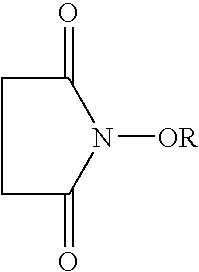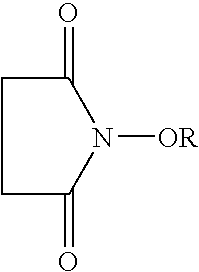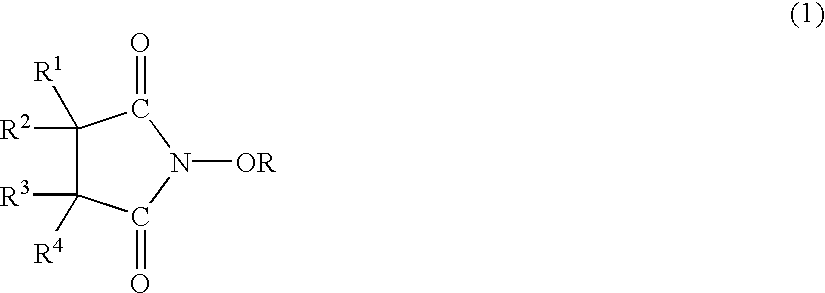Catalyst comprising n-substituted cyclic imides and processes for preparing organic compounds with the catalyst
a technology of cyclic imides and catalysts, which is applied in the direction of organic compounds/hydrides/coordination complex catalysts, physical/chemical process catalysts, bulk chemical production, etc., can solve the problems of substrate decomposition, high temperature and/or high pressure, and the catalytic oxidation process cannot easily and efficiently produce alcohol or carboxylic acid under mild conditions. , to achieve the effect of high selectivity and high yield
- Summary
- Abstract
- Description
- Claims
- Application Information
AI Technical Summary
Benefits of technology
Problems solved by technology
Method used
Image
Examples
example 1
[0307]A mixture of 2 mmol of p-xylene, 0.4 mmol of N-acetoxyphthalimide, 0.01 mmol of cobalt(II) acetate, 0.01 mmol of manganese(II) acetate and 5 ml of acetic acid was stirred at 100° C. in an atmosphere of oxygen gas (1 atm=0.1 MPa) for 14 hours and thereby yielded terephthalic acid and p-toluic acid in yields of 92% and 1%, respectively.
example 2
[0308]A mixture of 2 mmol of p-xylene, 0.4 mmol of N-acetoxyphthalimide, 0.01 mmol of cobalt(II) acetate and 5 ml of acetic acid was stirred at 100° C. in an atmosphere of oxygen gas (1 atm=0.1 MPa) for 14 hours and thereby yielded terephthalic acid and p-toluic acid in yields of 91% and 1%, respectively.
example 3
[0309]A mixture of 2 mmol of p-xylene, 0.2 mmol of N-acetoxyphthalimide, 0.01 mmol of cobalt(II) acetate and 2 ml of acetic acid was stirred at 100° C. in an atmosphere of oxygen gas (1 atm=0.1 MPa) for 14 hours and thereby yielded terephthalic acid and p-toluic acid in yields of 89% and 1%, respectively.
PUM
| Property | Measurement | Unit |
|---|---|---|
| temperatures | aaaaa | aaaaa |
| pKa | aaaaa | aaaaa |
| sublimation point | aaaaa | aaaaa |
Abstract
Description
Claims
Application Information
 Login to View More
Login to View More - R&D
- Intellectual Property
- Life Sciences
- Materials
- Tech Scout
- Unparalleled Data Quality
- Higher Quality Content
- 60% Fewer Hallucinations
Browse by: Latest US Patents, China's latest patents, Technical Efficacy Thesaurus, Application Domain, Technology Topic, Popular Technical Reports.
© 2025 PatSnap. All rights reserved.Legal|Privacy policy|Modern Slavery Act Transparency Statement|Sitemap|About US| Contact US: help@patsnap.com



